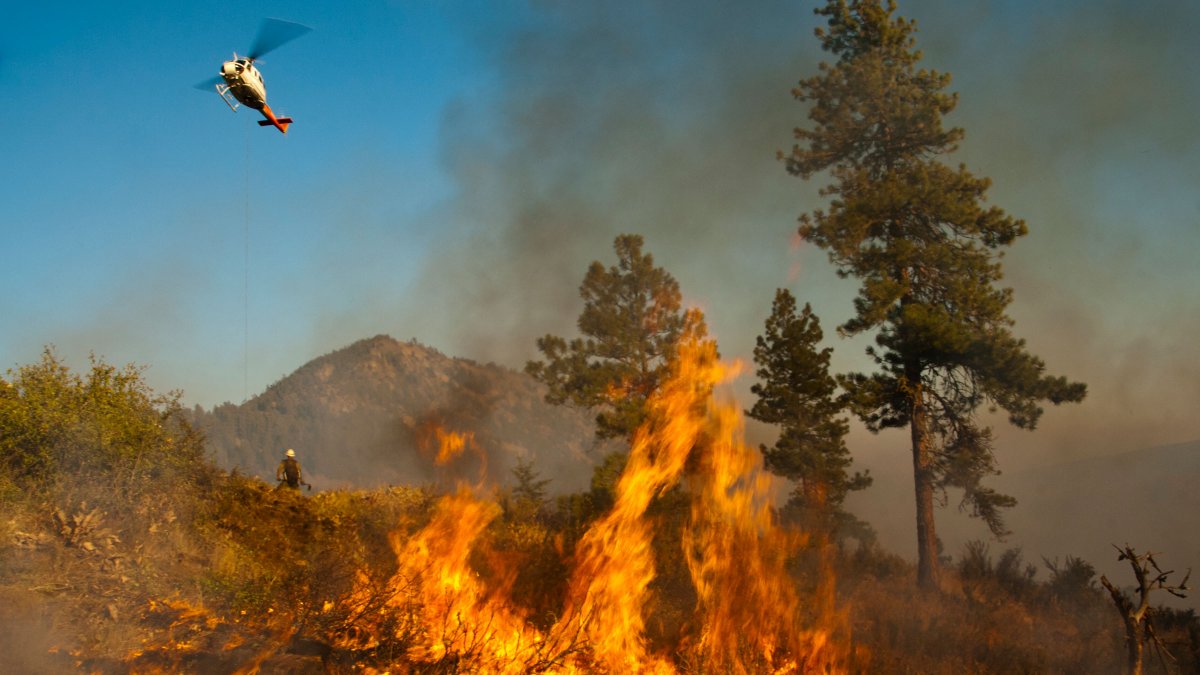We’re Entering an Era of Mega-Fire
Posted: April 19, 2018Source: Outside Online
A new book by Heather Hansen explores the complicated world of wildland-urban interface firefighting as it unfolded in the Cold Springs Fire near Nederland, Colorado

I live in Nederland and was home the day the fire started. Only marginally concerned—it flamed up across a reservoir from my home, and in the 15 years that we’d lived here, we’d never had a fire so close to our home blaze out of control—I left with my husband and three children on an overnight mountain bike trip to Winter Park, two hours away. By July 10, friends were texting to say that the fire had grown and we should rush home in case our neighborhood was evacuated.
A year and a half later, I know that wildland firefighters acted heroically to stop the blaze that would come to be known as the Cold Springs Fire. It eventually charred 430 acres of private land and 98 acres of Forest Service land, required 12 Type 1 and Type 2 fire crews, employed 744 fire-related personnel, and cost a total of $3.5 million. But I had no idea of the politics, policies, science, history, innovation, blood, sweat, and controversy that have been linked to wildland fire management and suppression in our country since the creation of the Forest Reserve Act of 1891, which put millions of acres of mountainous forestland in the West into the public domain.
Journalist Heather Hansen had been following firefighters from Station 8 in Boulder, Colorado, for months when the Cold Springs Fire broke out in Nederland. (She even became a certified wildland firefighter in the process.) In her new book, Wildfire: On the Front Lines with Station 8 ($25; Mountaineers Books), an entire section is devoted to a fire that personally affected my life—which, truthfully, may have influenced my positive feelings about the book. But what Hansen really focuses on is telling the story of fire management and mitigation in the West, layered with the added context of history, science, landscape, and human behavior.
Year by year, Hansen writes, humans—and human-caused global warming—increase the chances of wildfire. A major problem in the past several decades has been the influx of people moving to the “wildland-urban interface” (cities next to undeveloped places, like Boulder, Colorado; Bozeman, Montana; and Santa Fe, New Mexico). We’ve also entered the age of the so-called mega-fire, a new normal of seemingly unstoppable blazes.
Hansen gives us a fascinating overview of major wildfires in the West that brings into relief something we all know: big blazes have been a constant presence every fire season. The problem heightened back when Theodore Roosevelt created the U.S. Forest Service, with the main aim to “preserve forests,” not only for recreation but also for board feet of lumber—and wildfire “management” became a tool for preservation. By 1935, Hansen writes, the USFS had implemented a policy that every fire be “contained and controlled” by 10 a.m. on the day after it was reported.
Without naturally burning fires, thanks to the practice of fire exclusion, we now know that millions of acres of forest became overgrown and the 10 a.m. goal became laughable. But blaming the Forest Service’s practices solely for our current problem—as many people do—is misguided, Hansen writes. She spends dozens of pages artfully explaining how global warming, people moving into the wildland-urban interface, a shocking lack of funding to the USFS for fire mitigation, and public perception (read: fear and simple intolerance) of prescribed burns has led us to the mega-fire age we’re now in.
But instead of leaving readers aghast (and depressed) by our seemingly beyond-repair wildfire management practices, Hansen explains positive solutions that she discovers in her research. In some places, when appropriate, agencies are fully suppressing naturally sparked fires where they endanger homes or people, while letting nonthreatening parts of the same fire burn for the benefit of the resource. She also weaves in plenty of new studies that scientists are conducting around things like wind effect, heat effect, convection, and the conflagration of fuels.
Perhaps the least compelling parts of the book are the sections focused on the firefighters at Station 8. No insult—I was just far hungrier to learn about fire politics, policies, history, and science. But I was glad to have read about Mike Smith, a real-life Nederland neighbor I’ve never met in person, in early chapters of Wild Fire, because of his key role as incident commander when the Cold Springs Fire sparked.
With such great research, affecting writing, and first-person experience (Hansen embeds with Station 8 for training and even shows up ready to dig fire line when the Cold Springs blaze erupted), it seems odd that this book didn’t win over a bigger publisher and hasn’t garnered more acclaim. Perhaps it’s because the book feels very Colorado-centric (though Hansen travels throughout the West doing research). Nonetheless, she captures the most up-to-date science, theories, practices, and public perception about our still-expanding era of mega-fires. And for that reason alone, anyone living in the ever-growing wildland-urban interface will benefit from reading her book.
